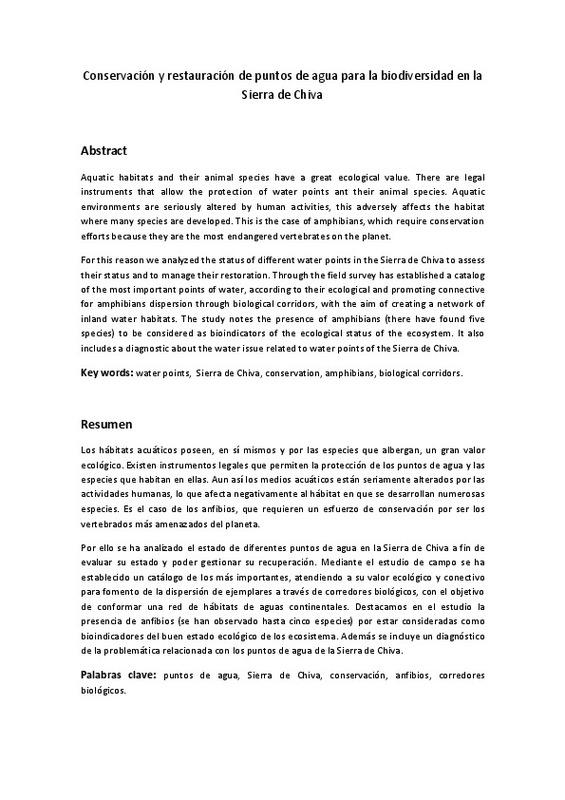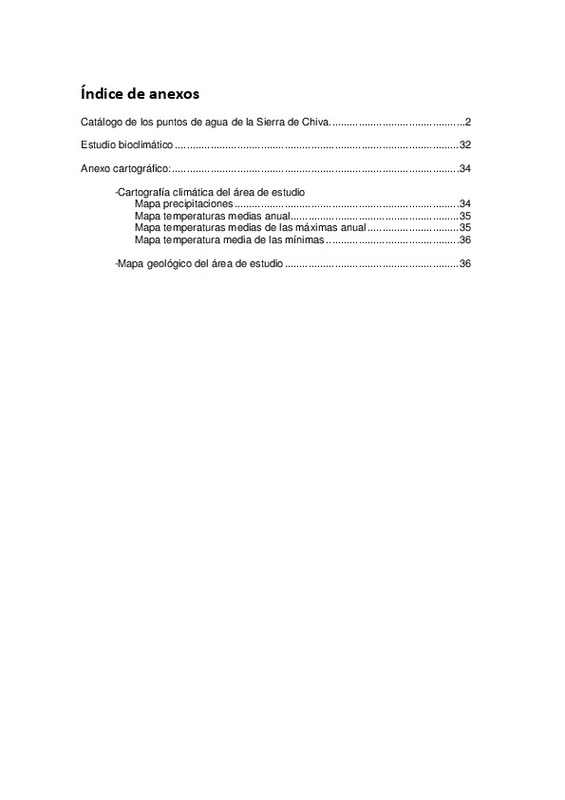JavaScript is disabled for your browser. Some features of this site may not work without it.
Buscar en RiuNet
Listar
Mi cuenta
Estadísticas
Ayuda RiuNet
Admin. UPV
Conservación y restauración de puntos de agua para la biodiversidad en la Sierra de Chiva
Mostrar el registro completo del ítem
Tomás Huercio, H. (2013). Conservación y restauración de puntos de agua para la biodiversidad en la Sierra de Chiva. Universitat Politècnica de València. http://hdl.handle.net/10251/36756
Por favor, use este identificador para citar o enlazar este ítem: http://hdl.handle.net/10251/36756
Ficheros en el ítem
Metadatos del ítem
| Título: | Conservación y restauración de puntos de agua para la biodiversidad en la Sierra de Chiva | |||
| Autor: | Tomás Huercio, Héctor | |||
| Director(es): | Torrent Bravo, José Andrés | |||
| Entidad UPV: |
|
|||
| Fecha acto/lectura: |
|
|||
| Resumen: |
Los hábitats acuáticos poseen, en sí mismos y por las especies que albergan, un gran valor ecológico. Existen instrumentos legales que permiten la protección de los puntos de agua y las especies que habitan en ellas. Aun ...[+]
Aquatic habitats and their animal species have a great ecological value. There are legal instruments that allow the protection of water points ant their animal species. Aquatic environments are seriously altered by human ...[+]
|
|||
| Palabras clave: |
|
|||
| Derechos de uso: | Reconocimiento - No comercial - Sin obra derivada (by-nc-nd) | |||
| Editorial: |
|
|||
| Titulación: |
|
|||
| Tipo: |
|
recommendations
Este ítem aparece en la(s) siguiente(s) colección(ones)
-
EPSG - Trabajos académicos [5004]
Escuela Politécnica Superior de Gandia







